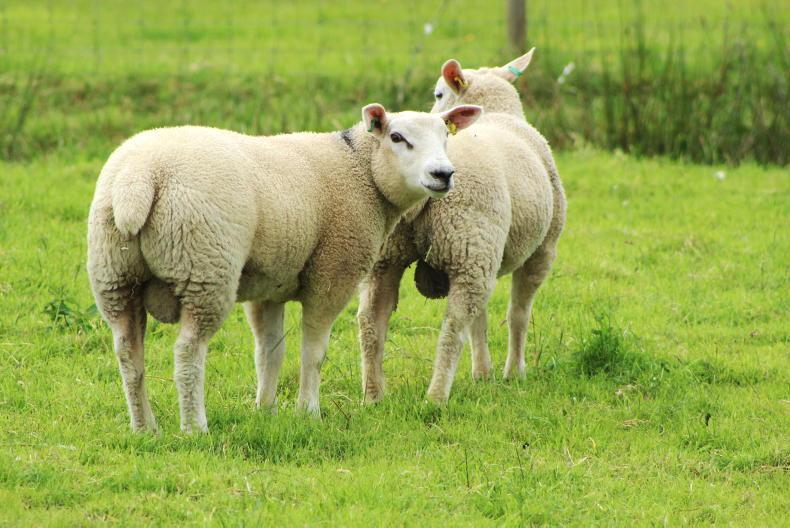The latest sheep breed survey undertaken by Signet Breeding Services and the Agriculture and Horticulture Development Board (AHDB) shows relatively small changes within the British sheep sector during the past decade.
Approximately 12.9m ewes were mated in 2020, down from 13.1m when the last survey was conducted in 2012.
According to the results returned by 6,231 sheep farmers, 71% of those surveyed intend to maintain breeding ewe numbers at current levels.
The majority (58%) operate crossbred flocks, a 2% increase over the last decade.
Mule ewes are popular in crossbred flocks, and account for nearly one-fifth of the national flock, followed by Texel crosses.
In purebred flocks, hill breeds continue to dominate, with the list headed by Welsh Mountain, followed by Scottish Blackface and Swaledale.
However, all three have seen a decline in ewe numbers since the last survey in 2012.
Purebred Scottish Blackface has seen the largest drop from 1.125m ewes mated in 2012 to 722,000 in 2020.
Welsh Mountain ewes fell from 966,000 mated in 2012 to 801,000 last year with Swaledale falling from 721,000 to 614,000.
Outside of the hill breeds, Lleyn is the next most used purebred ewe, with close on 500,000 ewes, of which half were mated back to Lleyn rams and the remainder crossed to other breeds.
Wool shedding breeds have increased during the past decade, as have breeds such as New Zealand Suffolk.
Rams
In terms of sires, Texel is by far the most popular choice of ram. More than a quarter of rams used across Britain are Texel, followed by Suffolk which accounted for 8.7% of the total. Terminal breeds in general sire 58% of lambs born annually.
Use of performance recorded rams remains low with survey respondents indicating that less than 12% of rams from the main terminal sire breeds came with Estimated Breeding Values (EBVs). Just 10% of farmers said that they always request EBV information when purchasing sires.
Read more
Sheep prices: Tight supplies lift lamb quotes 10c/kg to 20c/kg
The latest sheep breed survey undertaken by Signet Breeding Services and the Agriculture and Horticulture Development Board (AHDB) shows relatively small changes within the British sheep sector during the past decade.
Approximately 12.9m ewes were mated in 2020, down from 13.1m when the last survey was conducted in 2012.
According to the results returned by 6,231 sheep farmers, 71% of those surveyed intend to maintain breeding ewe numbers at current levels.
The majority (58%) operate crossbred flocks, a 2% increase over the last decade.
Mule ewes are popular in crossbred flocks, and account for nearly one-fifth of the national flock, followed by Texel crosses.
In purebred flocks, hill breeds continue to dominate, with the list headed by Welsh Mountain, followed by Scottish Blackface and Swaledale.
However, all three have seen a decline in ewe numbers since the last survey in 2012.
Purebred Scottish Blackface has seen the largest drop from 1.125m ewes mated in 2012 to 722,000 in 2020.
Welsh Mountain ewes fell from 966,000 mated in 2012 to 801,000 last year with Swaledale falling from 721,000 to 614,000.
Outside of the hill breeds, Lleyn is the next most used purebred ewe, with close on 500,000 ewes, of which half were mated back to Lleyn rams and the remainder crossed to other breeds.
Wool shedding breeds have increased during the past decade, as have breeds such as New Zealand Suffolk.
Rams
In terms of sires, Texel is by far the most popular choice of ram. More than a quarter of rams used across Britain are Texel, followed by Suffolk which accounted for 8.7% of the total. Terminal breeds in general sire 58% of lambs born annually.
Use of performance recorded rams remains low with survey respondents indicating that less than 12% of rams from the main terminal sire breeds came with Estimated Breeding Values (EBVs). Just 10% of farmers said that they always request EBV information when purchasing sires.
Read more
Sheep prices: Tight supplies lift lamb quotes 10c/kg to 20c/kg






 This is a subscriber-only article
This is a subscriber-only article











SHARING OPTIONS: